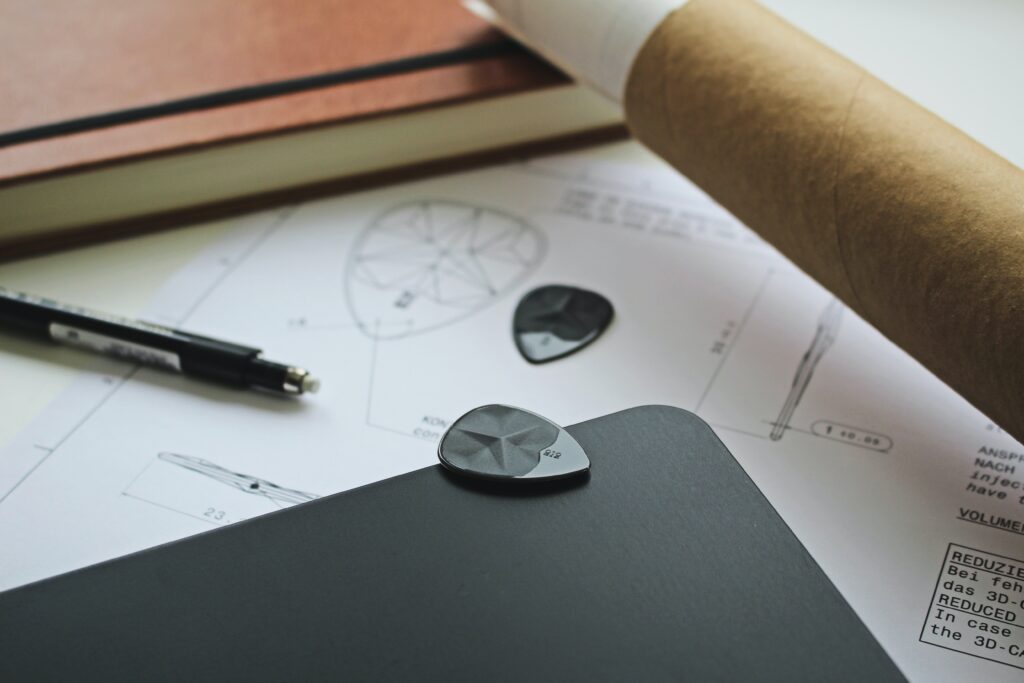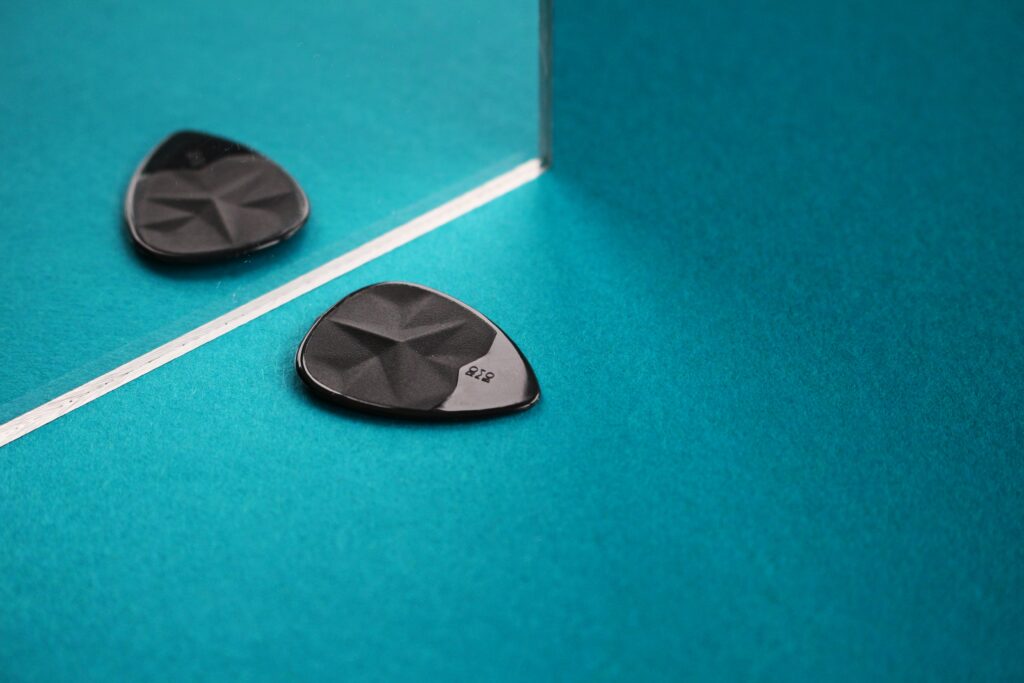A pick is a seemingly inconspicuous accessory for a guitar. Many musicians do not even think about its importance. The Monkey Music team will tell you about the types of picks and how to correctly determine which one is right for you.

What is a mediator? It is a bridge between you and your guitar, an extension of your fingers. It’s hard to imagine that such a small piece of plastic can have such a noticeable effect on your game. When you are just learning to play, you don’t care about the pick and its properties. But after a few months of practice, a simple pick change can improve and completely change your playing.
Let’s compare different picks and choose the right one. All of a sudden you’ve been buying the wrong things all this time? Let’s start with five key features. The ease of playing and the tone of the pick depend on 5 factors:
- Thickness
- Hardness
- Texture
- Size / Shape
- Material
Thickness Picks come in 4 main sizes:
Thin (thin) – 0.40–60 mm or less
Medium (medium) – 0.60–80 mm
Heavy (heavy) – 0.80-1.20 mm.
Extra heavy (extra heavy) – 1.20 mm and more
These ranges may differ for each manufacturer. Thin picks are usually better for:
obtaining a bright tone – their contact with the strings emphasizes high frequencies;
obtaining a sound of a narrower dynamic range – their flexibility limits the achievable volume, which is especially noticeable in studio recording;
for acoustic guitar playing, partly because of the narrower dynamic range, but also because it adds clarity to individual notes in chords.
Thick picks are usually better for:
- getting a softer tone in the sound – weight and rounded edges allow you to extract more bass and less high frequencies;
- sound with a wider dynamic range – they offer more control over volume and attack;
- playing electric guitar – they provide more speed and accuracy during fast solos;
playing with strong distortion – they provide clarity and readability of individual notes.
However, there is a caveat – thick picks require more finger strength and dexterity for better sound control. At one of the master classes of the famous Russian guitarist Viktor Zinchuk, I remember the phrase: the heavier the style of music, the thicker the mediator.
Hardness
Even if your pick is thin, but made of solid material, it will resemble a thick one in terms of characteristics. And vice versa – thick and soft picks are closer to thin picks in terms of characteristics.
Texture
The more textured the surface of the pick, the greater the friction between the fingers and the pick. This is especially useful when the hand gets sweaty while playing. It does not matter here whether you have a thick or thin pick, a good grip between the fingers and the pick is always necessary. But the texture is important – it affects how easily the pick passes along the string.
Smooth and slippery picks produce a cleaner and more natural tone, while rough and textured picks add a touch of grain and character to the sound. Picks with smooth and rounded edges produce a warm and clean tone, while picks with sharp edges produce a brighter sound.
The size
Very small picks are popular in guitar circles, but not the most common. Small picks make it easier to use mixed playing techniques, as well as muting with the palm of the pick and fingers. Of course, “small” is a relative term, it all depends on the size of your hands. My advice is to pick a pick big enough to fit in your hand.
The form
On the Internet, you can find picks of all kinds and shapes (the most famous example is a shark fin pick). In almost all cases, you’re better off sticking with the usual variation, the standard triangular drop shape.
Mediators are distinguished by sharpness:
- sharp picks have a strong attack with a brighter tone and are better suited for solos
- rounded ones have a softer attack with a softer tone and are better suited for fighting
Material
The last but most important factor of all. The material of a pick is what ultimately determines its stiffness, texture, and overall performance. Throughout the history of music, musicians have tried to make picks out of just about anything. The best option was the shell of the Atlantic Hawksbill tortoise. But in 1973, increased pick demand for the Atlantic tortoise threatened the extinction of the entire species, so plastic picks took over. As a result, these three material options became the most popular:
- Nylon is usually softer, more textured and is best suited for light and flexible picks.
Celluloid is stiffer, with a smoother, smoother texture than nylon. - Acetal – aka Delrin (trademark of Dupont), aka Tortex (a popular line from Dunlop), has a textured roughness that accurately mimics the feel of a tortoise shell
- Less common materials for picks are: bronze and steel as hard material options, wood, felt, leather and rubber as soft material options.
So which mediator should you choose?
You won’t know until you try everything. The price of picks allows you to simply buy an assortment pack of different thicknesses and different materials in order to try each one.

From myself I will add that thin picks are good for playing rhythmic patterns on an acoustic guitar. Thin picks are not at all suitable for playing riff electric guitar music, the so-called carving, as well as playing powerful lingering solos.
Personally I prefer 2mm picks for soloing and 0.5mm picks for acoustic guitars. In the case of mixed acoustic parts, where there are both solo parts and parts of chordal texture, such as Pink Floyd’s “Wish you were here” or Lynyrd Skynyrd’s “Sweet home Alabama”, I use picks from 0.8 to 1 mm. For playing the electric guitar, I use various picks from 1.14 to the already mentioned 2 mm.
